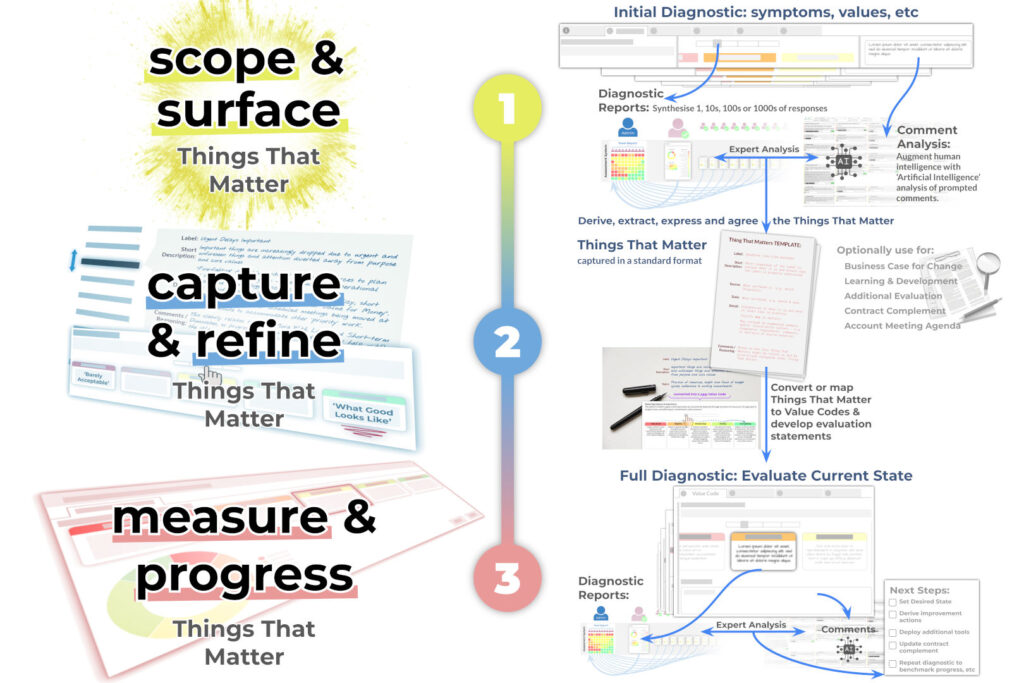Value Management: How It Works
Value Management is all about the Things That Matter, and there are lots of possible starting points.
However, the most common starting point is a three step process to begin orienting around what matters most:
- Scoping and Surfacing the Things That Matter
- Capturing and Refining the Things That Matter
- Measuring and Progressing the Things That Matter
This three step process of engagement, motivation and change is primarily supported by two complementary diagnostics:
- The Symptoms of What’s Not Working, which focuses on when Things That Matter aren’t working (including misalignment on what the Things That Matter are) – loosely “away from the negative”.
- The Value Vectors, which focus on “values” to pursue and their associated outcomes, both of which relate to Things That Matter – loosely “towards the positive”.
The two diagnostics complement each other as follows:
- Symptoms can indicate where there are issues with underlying values and goals.
- Value Vectors can indicate where symptoms are likely to develop; by covering both away-from-the-negative and towards-the-positive, the two diagnostics cover the full spectrum.
Most of the time, clients start with the Symptoms of What’s Not Working diagnostic.
This is usually as there are known issues to resolve – a necessary step ahead of being able to focus more positively on progress – but it can sometimes be used to look at what might go wrong, or sometimes to check everything really is as OK as it seems.
However the three step process is run, though, there are several options – Value Journeys – that customers can pursue during it or afterwards, depending on the situation and what has been uncovered.

Request an invitation
Request an invitation to self-diagnose the symptoms of what’s not working in your strategic relationship by sending us the following information.
